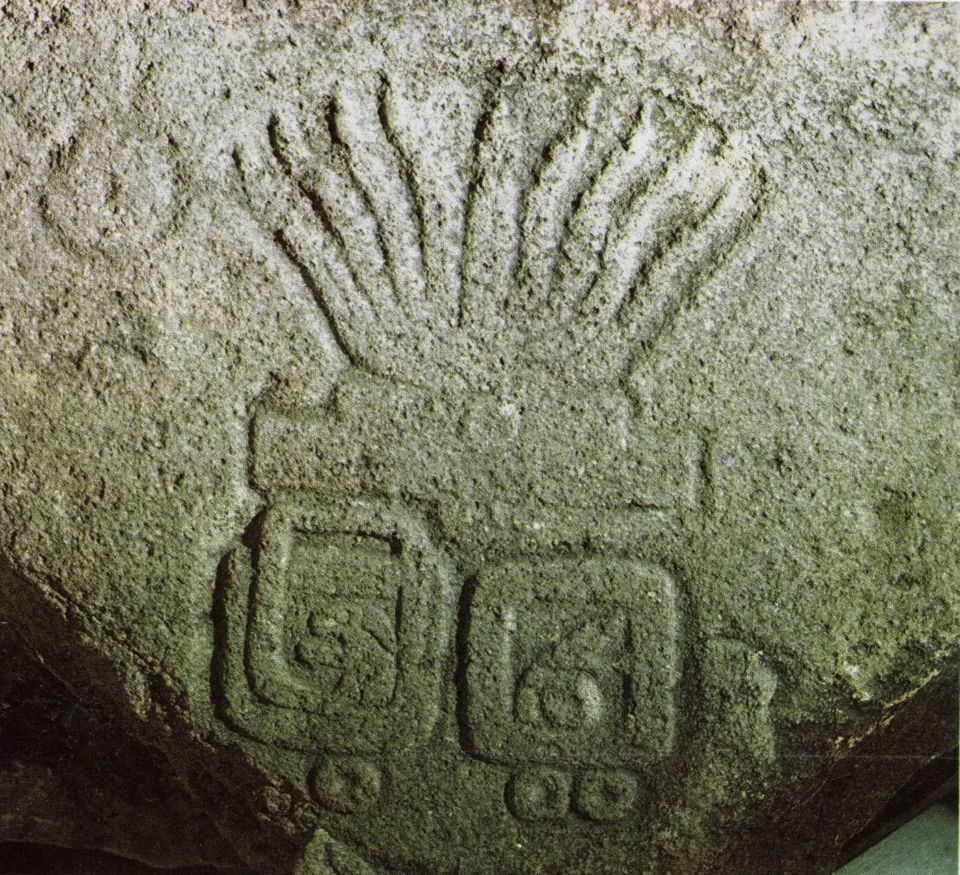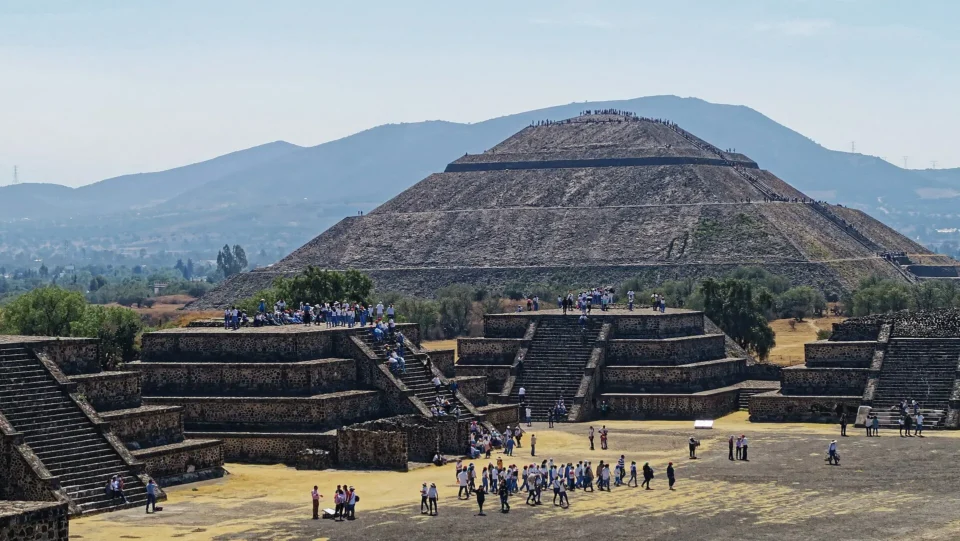You can also listen to this article in the following audio:
Teotihuacan, located near present-day Mexico City, was one of the most impressive and enigmatic cities of pre-Hispanic Mexico. Known worldwide for its majestic pyramids of the Sun and the Moon, this ancient Mesoamerican metropolis was also a key center for cultural, astronomical and ceremonial development.
Calendars and Glyphs in Teotihuacan
Various reliefs and sculptures found in Teotihuacan, such as the Stone of the Four Glyphs, the Three Stelae, the Stone of the Year 3 Tochtli (discovered in 1965), the Stele of the Two Glyphs, and the famous Stone of the New Fire, feature symbols related to apparent calendars and ancient cultural traditions.
Although Nahua glyphs predominate on these stones, we also find other types of symbols and diverse cultural influences, especially at nearby sites such as Xochicalco. For example, at least ten Nahua glyphs found at Xochicalco were later integrated into the sun stone or Aztec calendar, composed of 20 symbols representing specific days.
A notable symbol used to mark the year is formed by an intertwined angle and rhombus, with different decorative and symbolic elements associated with gods or numerations indicating specific dates. Interestingly, only four of the twenty days of the sunstone were used to name years: Rabbit, Reed, Flint and House. These days, known as “year bearers”, were also used by cultures such as the Mexica and Mixtec, highlighting a deep cultural link in Mesoamerica.
Around the 10th century, there was a significant change in these “year bearers” in the transition from the Classic horizon to the Toltec era, as revealed by the ceramic finds associated with these inscriptions.
Funerary Rituals in Teotihuacan
As for burials, archaeological excavations have revealed interesting and diverse funerary practices. In the Chamber of Offerings at Xochicalco, a primary burial was discovered beneath the floor of the ceremonial building, the only one found so far in this specific area. This burial was accompanied by valuable objects that probably belonged to a high-ranking individual.
In another sector called “El Cementerio”, several more primary burials were located, including a double burial that stood out for having intentional tabular erect cranial deformation and modified teeth. In addition, numerous secondary burials were found accompanied by fragmented ceramics, which could indicate complex rituals related to death.
Likewise, several ceremonial structures, such as the Pyramid and the structures around it, contained secondary burials that also included elaborate offerings. In general, these burials correspond to relevant characters such as priests or warriors, clearly indicating the social and religious hierarchy of Teotihuacán.

The monolith was found in Xochicalco during archaeological explorations carried out between 1966 and 1967, and is currently part of the collection of the Cuauhnáhuac Museum of the National Institute of Anthropology and History (INAH), located in the Palace of Cortés, in Cuernavaca, Morelos.
Where did the common people bury their dead?
In addition to the ceremonial burials found in important structures, it is believed that the common inhabitants of Teotihuacán, who lived in houses made of perishable materials such as wood, palm and unfired clay, also buried their dead near their dwellings. Although these houses have disappeared over the centuries, it is considered very likely that they may have had their own cemeteries or dedicated spaces for daily burials. However, so far, such cemeteries have not yet been located by archaeologists.
These archaeological discoveries allow us to learn more about how the inhabitants of Teotihuacán and its surroundings lived, measured time and paid tribute to their dead, offering us a fascinating glimpse into the Mesoamerican past.
